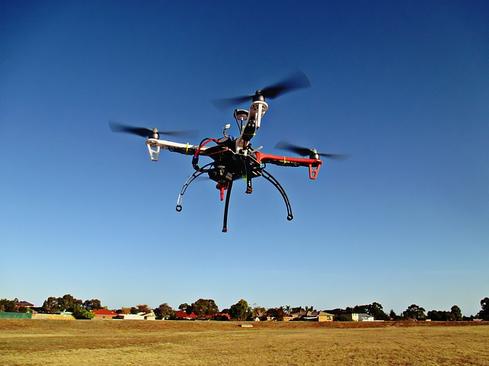The UAV flight limits imposed by SB 142 could have led to excessive litigation, said Governor Jerry Brown. So drone flights are OK for now.


Drones: 10 Novel Uses For Your City
Drones: 10 Novel Uses For Your City (Click image for larger view and slideshow.)
A California bill to outlaw trespassing drones has been vetoed by Governor Jerry Brown.
Senate Bill 142, introduced by State Senator Hannah-Beth Jackson (D-Santa Barbara) in January, sought to prohibit drones from trespassing over private property without the property owner's permission, with exemptions for drones operated by government agencies and other organizations with land access rights.
California law already bans trespassing by people. SB 142 would have extended the law to apply to drones, effectively creating a no-fly zone below 350 feet.
The FAA classifies recreational drones (less than 55 pounds) as model aircraft, which means they must fly below 400 feet. Commercial drones (less than 55 pounds) are currently required to fly below 500 feet, but the FAA's commercial drone rules have yet to be finalized.
A 2013 Oregon law prohibits drone flights up to 400 feet over privacy property without permission.
In a statement explaining his decision, Brown wrote:
Drone technology certainly raises novel issues that merit careful examination. This bill, however, while well-intentioned, could expose the occasional hobbyist and the FAA-approved commercial user alike to burdensome litigation and new causes of action.
The bill was supported by the American Chemistry Council, the California Police Chiefs Association, the City of Camarillo, and the Privacy Rights Clearinghouse. It was opposed by a handful of technology and industry groups, including the California Chamber of Commerce, the Consumer Electronics Association, CSAC Excess Insurance Authority, DJI Technologies, GoPro, and TechNet.
Opponents of the bill argued that lawsuits could be brought under SB 142 even if a drone's trespass was unintentional.
Jackson, in a statement posted to her Facebook page, expressed disappointment in the decision while noting that the bill has prompted further discussion of how drones affect privacy and property rights. "Obviously, the public wants some action on this issue," she said. "I hope to continue this discussion and continue working on this issue next year."
Last month, US Senator Charles Schumer (D-NY) said he wants to amend the FAA Reauthorization Bill with a requirement that drone makers support geofencing, to make UAVs respect lawful boundaries.
Drone sightings by aircraft pilots have been increasing. Last month the FAA said that pilots reported more than 650 drone sightings between January and August 9. That's up from just 238 sightings in all of 2014.
As drones have become more common, they've caused conflict and controversy. Over the summer in California, firefighters had to call off several water drops over a wildfire in San Bernardino Country due to the presence of civilian-operated drones.
In New Jersey last year a man shot down a drone, claiming it had been flying over his parent's property. The drone owner sued the man, who had to pay $850 in damages. The shooter was fortunate not to have been charged to the full extent of the law -- the FAA considers drones aircraft, so shooting at one could be charged as a felony, subject to up to 20 years in prison.
Technology companies, led by Amazon, Facebook, and Google, see drones as a promising delivery platform for goods and services and have been investing to develop UAV systems. A report published in February by CB Insights found that drone industry investments in 2014 increased 104% year-over-year, exceeding $108 million across 29 deals.
[Read about weaponized drones in North Dakota.]
Companies, along with government groups, also see potential demand for drone defenses. One such company is Dedrone, which makes a multi-sensor drone detection system designed to alert users to the presence of a drone.
Brian Edmonds, president of Dedrone, said in an email that preventing drones from flying over one's property is difficult. "Today's drones are relatively quiet, and their cameras are powerful, capable of 4K images that can be zoomed in for great up-close views," he said. "One could be hovering outside of your house right now and you wouldn't know."
But Edmonds advises against taking steps to down a drone. "At this time, identification and threat evidence for law enforcement is the best defense," he said. "When you see a drone around your property, your first instinct may be to bring it down. But you should consider the consequences and potential liability of doing so under today's laws. ... There are ways to bring them down, but they are not legal, at least yet."
Edmonds expects laws offering protection from drones to pass in the future, but cautions that there will be people who willingly break those laws. Enforcement will be a challenge, he said.
About the Author(s)
You May Also Like







